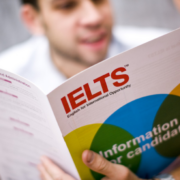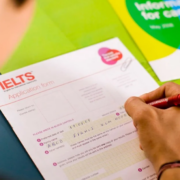What questions are asked in IELTS speaking test?
IELTS split into three parts, this test aims to evaluate different aspects of communication, including fluency, coherence, vocabulary, and pronunciation. In this comprehensive blog, we will explore the structure of the IELTS Speaking Test and delve into the common types of questions candidates can anticipate, offering valuable insights and strategies to approach each section.
Also Read: Lucrative Nurse Assistant Jobs in 2024
Part 1: Introduction and Interview (4-5 minutes)
The first part of the IELTS Speaking Test serves as an introduction and an opportunity for the examiner to get to know the candidate. It typically lasts for about 4 to 5 minutes, and the questions are focused on familiar topics such as home, studies, work, and interests.
Introduction and Personal Information:
- The examiner initiates the conversation by introducing themselves and confirming the candidate’s identity.
- Questions may include inquiries about the candidate’s hometown, studies, and current occupation.
General Topics:
- Common questions revolve around daily routines, hobbies, interests, and preferences.
- For instance, candidates might be asked, “Can you tell me about your favorite leisure activities?”
Giving Extended Responses:
- Candidates are encouraged to provide detailed and extended responses to showcase their ability to express ideas coherently.
- Tip: Practice answering common introductory questions with a focus on elaboration and clarity.
Part 2: Long Turn (3-4 minutes)
In the second part of the Speaking Test, candidates are presented with a task card containing a specific topic and prompts. They have 1 minute to prepare and make notes before delivering a monologue on the topic for 1-2 minutes.
Receiving the Task Card:
- Candidates receive a task card with a prompt, a set of questions, and some time to prepare notes.
- The topic can vary widely, covering aspects such as describing an event, person, place, or experience.
Preparing and Delivering a Monologue:
- Candidates have 1 minute to make notes and prepare their response.
- They are expected to speak for 1-2 minutes on the given topic, addressing all the points on the task card.
Follow-up Questions:
- After the candidate completes their monologue, the examiner may ask follow-up questions related to the topic.
- Tip: Practice organizing thoughts quickly during the preparation time and delivering a structured, detailed monologue.
Part 3: Discussion (4-5 minutes)
Discussion on Part 2 Topic:
- The examiner initiates a discussion by asking further questions related to the topic presented in Part 2.
- The focus is on exploring the candidate’s ability to express opinions, discuss ideas, and respond to more complex queries.
Abstract and Analytical Thinking:
- Questions may delve into broader issues, requiring candidates to think critically and express nuanced opinions.
- For example: “How do you think technology has influenced social interactions in your country?”
Expressing Opinions and Providing Justifications:
- Candidates are encouraged to express opinions clearly and provide justifications for their viewpoints.
- Tip: Practice discussing a variety of topics, articulating opinions, and supporting them with relevant examples.
Tips for Speaking Test:
Engage in Regular Conversations:
- Actively engage in English conversations with friends, language partners, or teachers to improve fluency and conversational skills.
Record and Evaluate Yourself:
- Record your responses during practice sessions and evaluate them to identify areas for improvement, focusing on pronunciation, vocabulary, and coherence.
Expand Vocabulary on Common Topics:
- Build a strong vocabulary on common IELTS topics such as education, technology, environment, and health to articulate ideas effectively.
Practice Pronunciation and Intonation:
- Focus on correct pronunciation and intonation to enhance overall speaking clarity.
Simulate Test Conditions:
- Practice under timed conditions to simulate the actual test environment, improving time management and reducing anxiety.
Seek Feedback from Teachers or Tutors:
- Regularly seek feedback from experienced English language teachers or tutors to receive valuable insights and guidance.
Stay Informed about Current Affairs:
- Stay updated on current affairs and global issues to confidently discuss a wide range of topics during the Speaking Test.
Advanced Strategies for Success:
Situational Role-Play:
- Real-life Simulations: Engage in role-playing scenarios to simulate real-life conversations. This helps build confidence in handling unexpected situations, a valuable skill in Part 3.
- Diverse Scenarios: Practice discussing scenarios related to education, work, or social settings. This prepares you for a broad spectrum of topics that may arise in the test.
Interactive Vocabulary Building:
- Thematic Vocabulary Groups: Categorize your vocabulary into thematic groups such as technology, environment, or education. This enhances your ability to access and use relevant vocabulary under pressure.
- Synonyms and Antonyms: Explore synonyms and antonyms for common words in your responses. This not only enriches your vocabulary but also showcases your linguistic versatility.
Listening to Various Accents:
- Diverse Audio Resources: Familiarize yourself with various English accents by listening to podcasts, interviews, and discussions. This prepares you for potential accent variations in the Listening and Speaking sections.
- Interactive Listening: Engage in conversations with speakers of different accents to refine your ability to understand and respond effectively.
Cultural Sensitivity:
- Global Awareness: Stay informed about global events and cultural nuances. This not only aids in Part 1 but also enriches your responses in the more complex discussions of Part 3.
- Cross-Cultural Communication: Practice expressing ideas in a way that is universally understandable, considering potential cultural differences in interpretation.
Conclusion:
The IELTS Speaking Test is an opportunity for candidates to demonstrate their ability to communicate effectively in English. By understanding the structure of each part and practicing a diverse range of topics, candidates can approach the test with confidence. Employing effective communication strategies, expanding vocabulary, and refining pronunciation will contribute to a successful performance on the day of the test. Remember, regular practice and exposure to various topics will not only enhance your speaking skills but also boost your overall confidence in English communication. Good luck!











Leave a Reply
Want to join the discussion?Feel free to contribute!